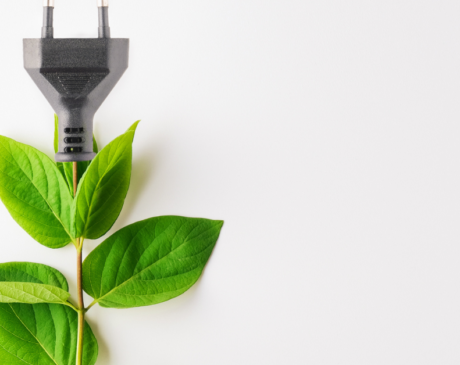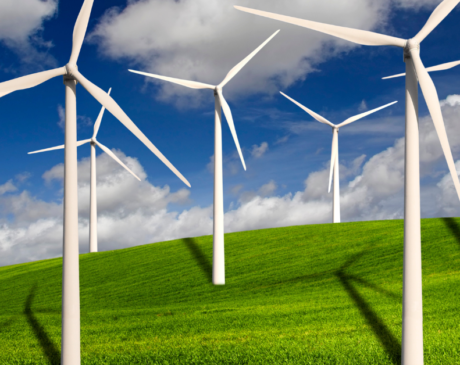Energy Harvesting Technologies and How They Work

If you’ve ever wondered how tiny devices can run without batteries or cables, you’re already brushing up against the fascinating world of energy harvesting technologies. This field focuses on capturing small amounts of energy from the environment—light, heat, motion, or radio waves—and turning them into usable power.
As electronics get smaller and more efficient, energy harvesting is becoming a crucial piece of the puzzle for self-sustaining devices, smart homes, and next-generation wireless systems.
In this article, we’ll explore what energy harvesting is, how it works, the main sources we rely on, current applications, and the challenges still standing in the way.
What Is Energy Harvesting?
At its core, energy harvesting (sometimes called energy scavenging) refers to the process of collecting low-level energy from the surrounding environment and converting it into electrical energy.
Rather than depending on disposable batteries or wired power, tiny systems can “sip” energy from naturally occurring sources. These can be as obvious as sunlight or as subtle as vibrations from a machine.
Although the idea has existed for decades (think solar calculators), the latest generation of micro energy harvesting techniques has unlocked new possibilities: powering smart sensors, medical wearables, and even elements of smart cities—all without ever changing a battery.

How Energy Harvesting Technologies Work
No matter the source, the principle is the same:
- Ambient energy is captured (light, motion, heat, etc.)
- Converted into electricity
- Conditioned and regulated through circuits
- Stored or used immediately
Different energy harvesting devices rely on different scientific effects:
- Photovoltaic materials convert light into electricity.
- Piezoelectric materials generate electric charge under mechanical stress.
- Thermoelectric materials create voltage from temperature differences.
- RF harvesting circuits rectify electromagnetic waves and convert them to DC power.
While the physics behind each method varies, the end goal is identical: producing stable, usable energy that can keep electronics running for long periods—sometimes indefinitely.
Primary Sources of Ambient Energy
There are several ambient sources that energy harvesting technologies rely on. Each has advantages and ideal use cases.
1) Solar and Indoor Light
The most well-known method uses photovoltaic cells to convert light into energy. Outdoor harvesting can power larger electronics, but indoor light harvesting is especially promising for low-power applications like smart home sensors.
2) Thermal Gradients
Thermoelectric generators (TEGs) create energy using differences in temperature. They shine in industrial settings where machinery or pipes naturally run hot, allowing sensors to function without separate power sources.
3) Vibrations and Motion
Think of engines, bridges, or a person walking. All create vibrations. Piezoelectric materials convert this mechanical stress into energy, making them ideal for self-powered monitoring systems.
4) Radio Frequency (RF) Signals
Although energy levels are low, wireless energy transfer through RF can power ultra-low-consumption devices like ID tags and some sensor networks. With the rise of 5G and IoT, RF harvesting is gaining attention.
Each source has its strengths, and the challenge lies in matching them to the right application.
Key Energy Harvesting Materials
The materials used play a central role in how effective a system can be.
- Silicon and organic PV materials for solar harvesting
- Piezoelectric ceramics and polymers for vibration-to-electric conversion
- Thermoelectric alloys for temperature-based systems
What’s interesting is how these materials continue to evolve. Organic solar films, for example, can be flexible and extremely lightweight, which opens the door for integration into clothing and soft surfaces.
Meanwhile, polymer-based piezoelectric materials are making mechanical harvesting more efficient with less structural bulk.
Real-World Energy Harvesting Applications
The most exciting way to understand energy harvesting is by seeing what it enables. Across industries, these technologies are reshaping how we think about power.
Smart Home and IoT Devices
Energy harvesting sensors can gather data—temperature, humidity, movement—without ever needing a battery change. This is critical for long-term, low-maintenance networks.
Industrial Monitoring
Factories are full of heat, vibration, and movement. Energy harvesting devices can monitor critical equipment, detect failures early, and improve efficiency without wiring power into hard-to-reach places.
Medical Wearables
Small devices that monitor health can harvest body heat or motion. This reduces reliance on tiny batteries, which are inconvenient—or sometimes impossible—to replace.
Infrastructure and Transportation
Bridges, railways, and roads experience constant vibrations. Sensors powered through micro energy harvesting help track structural health, preventing accidents.
Agriculture
Self-powered sensors track soil conditions, microclimates, and moisture levels, helping farmers optimize crop production.
These applications highlight a broader shift: instead of powering each electronic node individually, we’re designing networks that sustain themselves.
Why Energy Harvesting Matters
A major advantage of energy harvesting technologies is that they support self-powered sensors, meaning devices can run autonomously for years. This dramatically reduces maintenance costs and battery waste, especially in large networks with thousands of nodes.
It also enables electronics to exist in places where traditional power sources would be impractical—inside pipelines, across sprawling farms, embedded in wearable fabrics, or even underwater.
As billions of devices join the Internet of Things, demand for robust and autonomous micro-power solutions will only grow.
Challenges: Efficiency, Storage, and Scalability
Despite incredible progress, energy harvesting isn’t magic. There are clear challenges researchers and engineers need to solve.
Low Power Output
Most ambient sources produce only tiny amounts of energy. Improving conversion efficiency is an ongoing priority.
Intermittency
Sunlight doesn’t shine at night; machines don’t vibrate 24/7. Systems must include smart storage and management.
Power Management Circuits
The circuitry required to condition and store energy must be small, efficient, and inexpensive—no easy task.
Scalability
Translating lab-scale breakthroughs into mass-produced products takes time and often requires new manufacturing processes.
Still, the direction of travel is clear. Every year, we see more practical, affordable ways to power devices with harvestable energy.
How Harvesting Supports Self-Sustaining Electronics
One of the big questions from engineers and everyday consumers is: How do these technologies impact the development of self-sustaining devices?
The answer lies in the balance between energy consumption and energy availability. Modern low-power circuits consume only micro- or milliwatts. If energy harvesting can supply even that small amount reliably, the device becomes essentially independent.
This autonomy means:
- Longer product lifetime
- Lower maintenance
- Greater deployment flexibility
- Less environmental waste
Imagine wearable sensors embedded in clothing that track biometrics without ever needing charging, or environmental monitors dropped into remote forests with no planned retrieval. These scenarios are closer than many think.

Looking Ahead
Where is the field heading? Continued innovation in energy harvesting sensors, materials, and ultra-low-power electronics is opening doors that didn’t exist even a decade ago.
We’re seeing hybrid systems that combine harvesting with tiny rechargeable storage elements, advancing beyond what single-source solutions could deliver.
As harvesting systems become more efficient and compact, they will increasingly power our daily environment—quietly, cleanly, and automatically.
Final Thoughts
Energy harvesting technologies and how they work is not just a scientific curiosity—it’s a practical and growing solution to help power the devices that surround us.
From smart agriculture to medical devices, this technology is pushing us toward a world where electronics can sustain themselves using nothing more than the ambient energy already available.
We’re not talking about replacing industrial power grids. We’re talking about freeing small electronics from the trap of batteries and cables—a shift that could redefine the structure of future digital ecosystems.
Energy is everywhere. Now, we’re finally learning how to use it.



